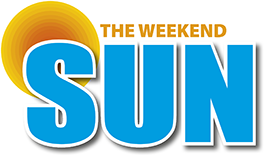 |
Sports correspondent & historian with |
History buffs are like squirrels, in that many will put things away in a safe place for another day - and then struggle to locate them later.
I once lost my prized collection of Hoofbeats (thoroughbred racing magazine) coloured photographs, for more than 20 years. What made the pics of the best racehorses of the 1960s, special, was that they were hand coloured from B&W negatives, before being re-produced.
A few weeks ago, I uncovered some more treasure that had been missing, for more than a decade.
During the 1950s, Parlophone Records released a series of long-playing records (LPs) of commentary of test matches.
What I unearthed in recent weeks was the 1956 Springboks and the 1959 British Lions recorded commentary. The recordings were of the radio commentary provided by the legendary Winston McCarthy.
What made the two records that I unearthed special to rugby memorabilia collectors, was that the covers were festooned with caricatures by legendary Kiwi cartoonist Neville Lodge.
The first live rugby radio commentary dates back to May 29, 1926, when local Christchurch radio station 3AC arranged for local broadcaster Alan Allardyce, to provide commentary at Lancaster Park of a club game between High School Old Boys and the Christchurch Club.
This was the first live sports encounter to be broadcast in our country.
Allardyce would go on to broadcast a number of sports, including broadcasting a race meeting from a haystack after being denied entry to the racecourse.
Early broadcasters went to great lengths to deliver their radio action to eager sports fans. Gisborne fighter Tom Heeney’s World Heavyweight title fight with Gene Tunney was a delayed broadcast transcribed from Morse code.
The 1950s preceded the advent of television in New Zealand and every living room possessed a large wireless radio that provided the news and sporting commentary.
Winston McCarthy started his rugby commentary career, in the shadows of World War II, with the Kiwi Army rugby team tour in 1945/46.
This writer, who lived not far from Athletic Park, was an avid Winston McCarthy fan and would have been on site at Wellington rugby headquarters, when Winston was in full voice during game day.
Long-time NZ television rugby commentator Keith Quinn recalls getting to know McCarthy, when Quinn joined the NZBC as a cadet and Winston would come into the office to record his weekend previews in the early 1960s.
Quinn recalled McCarthy, when a kick from goal was being taken on the other side of the field and he was unable to see the ball’s flight path, would always say “the crowd noise will tell us - so listen - it’s a goal”.
McCarthy was also the ground announcer giving out the team changes and scorers. He was even known to sometimes call out to the referee over the public address system; “Sir, Sir, there’s an injury back at halfway, Sir”.
Today radio and television sports broadcasting dictate two completely different commentary styles.
Television commentary (should) complement what the viewer is watching with facts, figures and personal observations.
Radio commentators need to paint a picture in their listener’s minds of the action taking place on the field of play.
In just a few short weeks’ time, many of the Black Cap cricket fans that will pack out the Bay Oval to witness the New Zealand side go to war with Australia, in three T20 battles, will listen to the radio coverage of the encounter to get a better understanding of what they are seeing.
